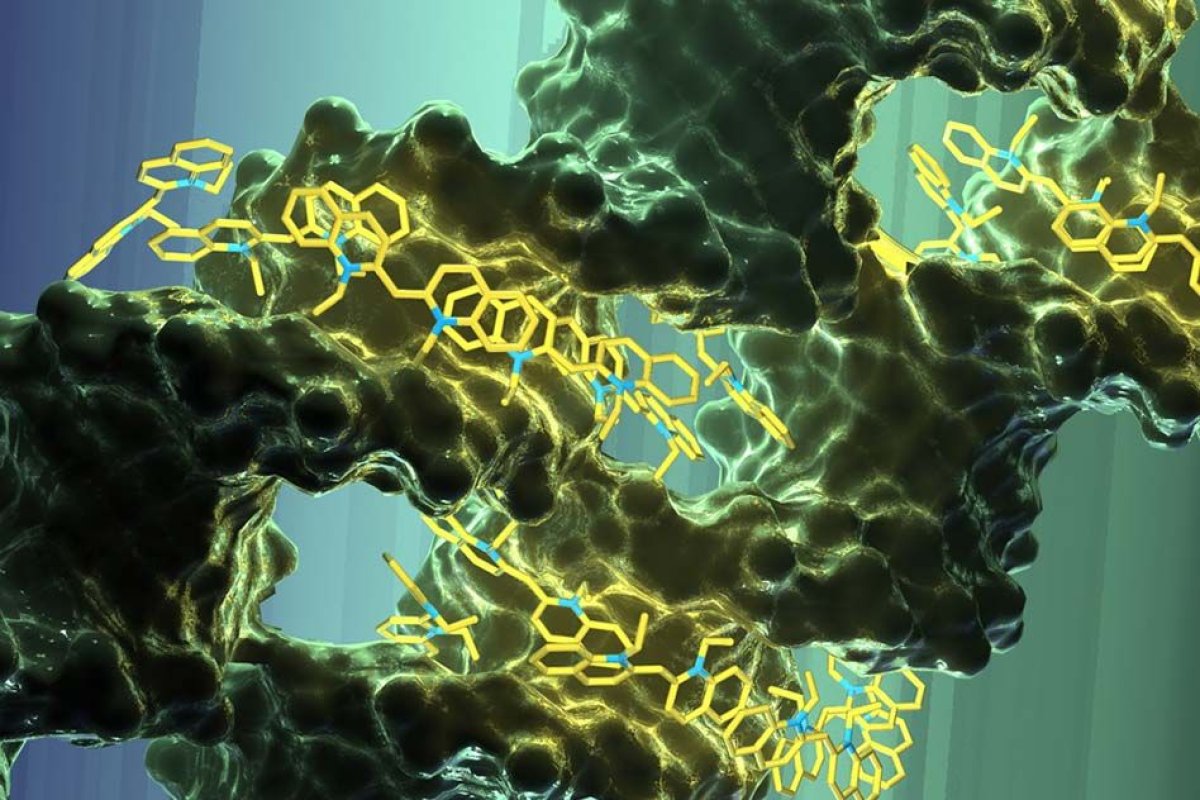
Researchers are one step closer to creating glass or textiles from man-made DNA that can absorb light—which could improve our use of solar energy through new types of materials.
The technique is complicated but fascinating. Inspired by the structures that plants use to gather sunlight and turn it into energy, the material mimics circuitry found in nature for harvesting light, explained Mark Bathe, a biological engineer at MIT.
Bathe and colleagues created this first-of-its-kind material by placing dyes on a helix of synthetic DNA. That arrangement, built on a nanometer scale (one nanometer is 10,000 times as small as the thickness of a human hair), creates a tiny circuit that can convert sunlight into energy. The researchers published their work this week in Nature Materials.
Plants capture sunlight and use that energy efficiently. Scientists—and, in turn, the rest of us—do not know how to move, transport, store, or convert this form of energy nearly as well as plants. Better understanding the mechanisms that plants use for photosynthesis could help humans capture and store sunlight for solar energy more efficiently.
This new work is a step toward doing just that, Gabriela Schlau-Cohen, another author and an assistant professor of chemistry at MIT, told Newsweek. Of course, we can't directly commandeer the plant parts responsible for photosynthesis.
"Converting chopped spinach to a solar panel is hard," said Schlau-Cohen. Rather, the team is trying to better understand the vegetative system in order to construct materials with similar abilities.
The team focused on what's known as exciton, a form of energy used by bacteria and plants. Exciton is a jargon word, but worth knowing about. Understanding excitons is the "final frontier of energy science," Bathe told Newsweek by email.

Solar panel technology that turns sunlight into energy is analogous to a roof collecting rainwater, said Bathe. The new DNA-based dye material is like the gutters—which allow us to control where the water flows, or in the case of harvesting light, to control the excitons. That's what the dyes accomplish: pushing the DNA structure to better manage that flow of energy.
"This latter step, the gutters controlling flow, is super important if you want to actually collect all of that rainwater to do something useful with it, like store it in a container so that you can use it later, recycle it, etc.," said Bathe.
Synthetic light-harvesting structures could one day be used to make glass or textiles—or other 2-D and 3-D materials—that can absorb sunlight to convert to electricity. These future materials could also store energy, or even serve as the basis for quantum computers.
And this invention may be just the beginning. More efficient pigments for the materials may be hiding in the Max Weaver Dye Library at North Carolina State University, which includes 98,000 unique dyes. The massive "map" of dyes was released in April, and will allow researchers to find dyes with certain chemical properties quicker than before, according to the university.
The future of solar power materials looks, shall we say, bright.
Uncommon Knowledge
Newsweek is committed to challenging conventional wisdom and finding connections in the search for common ground.
Newsweek is committed to challenging conventional wisdom and finding connections in the search for common ground.
About the writer
Sydney Pereira is a science writer, focusing on the environment and climate. You can reach her at s.pereira@newsweekgroup.com.
To read how Newsweek uses AI as a newsroom tool, Click here.






